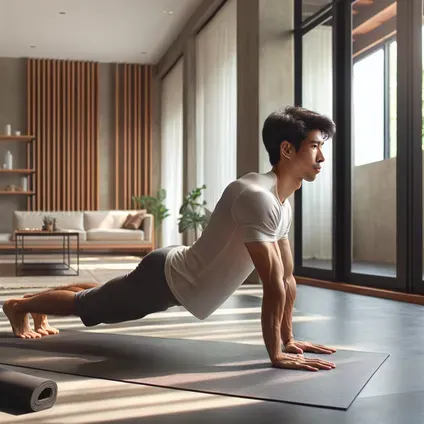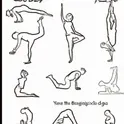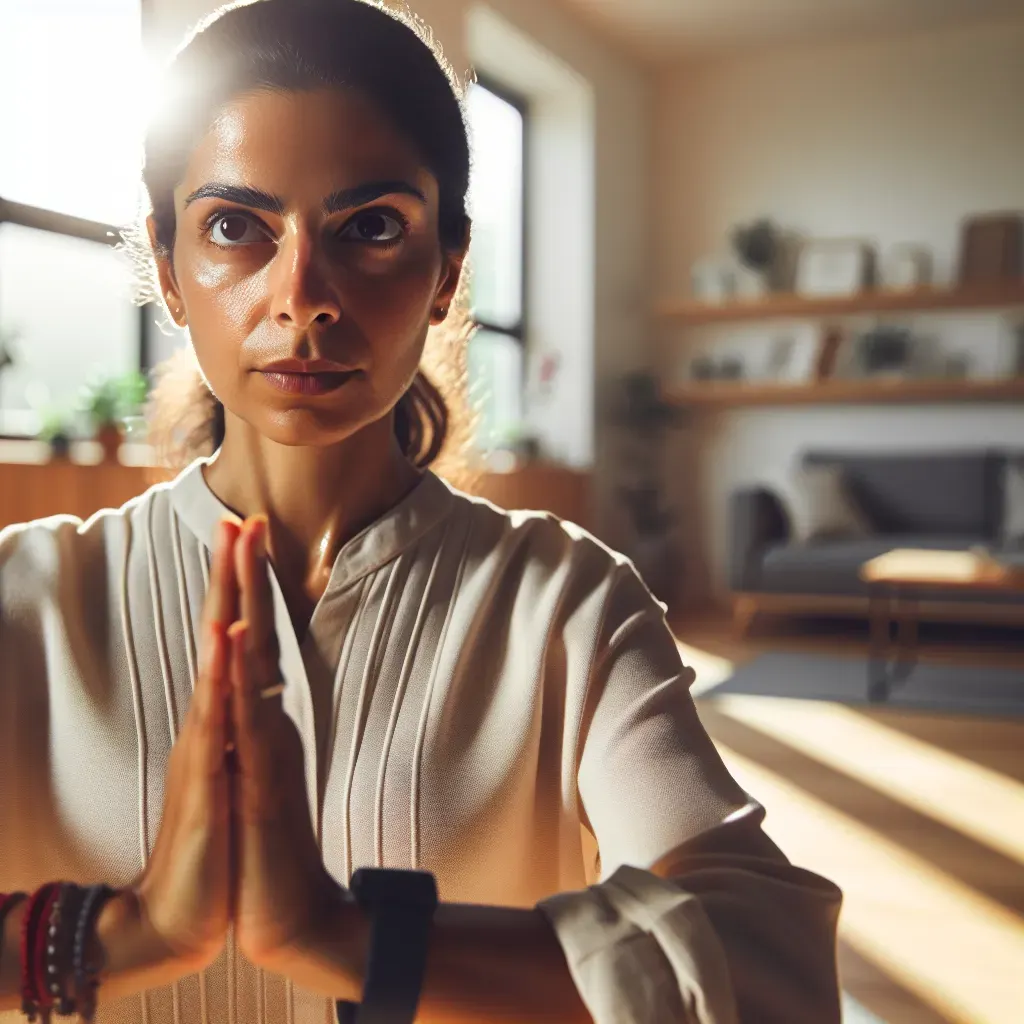Understanding Vinyasa Flow: Meaning and Practice
Table of Contents
- Introduction
- What is Vinyasa Flow?
- The History and Origins of Vinyasa Flow
- Benefits of Vinyasa Flow Yoga
- How to Practice Vinyasa Flow Yoga
- Common Vinyasa Flow Poses
- Conclusion
If you've ever stepped into a yoga studio or explored yoga online, you might have come across the term Vinyasa flow. But what does this term mean?
In this article, we will break down the meaning of Vinyasa flow, its origins, its benefits, and how you can incorporate it into your practice. Let's dive into the world of Vinyasa flow yoga.
What is Vinyasa Flow?

Vinyasa flow is a style of yoga that focuses on the connection between movement and breath. The word "Vinyasa" comes from the Sanskrit term "nyasa," which means "to place" and the prefix "vi," meaning "in a special way."
Therefore, Vinyasa can be understood as a "special way of placing" postures together.
In a Vinyasa flow class, you will typically move through a series of poses in a fluid, dynamic sequence.
Each movement is synchronized with your breath, which creates a continuous flow that can be both invigorating and calming.
This is often referred to as "moving meditation," where the emphasis is not just on the physical aspect of yoga but also on mindfulness.
The History and Origins of Vinyasa Flow
Vinyasa yoga has its roots in traditional Hatha yoga and has been influenced by various styles over the years.
The modern Vinyasa style was popularized in the 20th century by influential yoga teachers like Krishnamacharya and his students, including K. Pattabhi Jois, who developed the Ashtanga Vinyasa Yoga system.
Ashtanga yoga laid the foundation for Vinyasa flow by emphasizing a set sequence of postures linked with breath. Vinyasa flow evolved to allow for more freedom and creativity in sequencing, making it accessible to practitioners of all levels.
Benefits of Vinyasa Flow Yoga
Practicing Vinyasa flow yoga offers numerous benefits for both the body and mind. Here are some of the key advantages:
Improved Flexibility: Regularly practicing Vinyasa flow can enhance your flexibility, as it encourages you to stretch and move through various poses.
Increased Strength: The dynamic nature of Vinyasa flow builds strength in different muscle groups, making it a great full-body workout.
Enhanced Mindfulness: The focus on breath and movement promotes mindfulness, helping you to stay present and reduce stress.
Better Balance: Many Vinyasa poses require balance and coordination, which can improve your overall stability.
Cardiovascular Health: The continuous flow of movements can elevate your heart rate, contributing to better cardiovascular fitness.
How to Practice Vinyasa Flow Yoga
If you're new to Vinyasa flow, here are some tips to help you get started:
1. Find a Class
Look for local yoga studios that offer Vinyasa flow classes. Many studios have beginner classes designed to introduce you to the basics of Vinyasa.
2. Use Online Resources
If you prefer practicing at home, there are plenty of online platforms, such as YouTube or yoga apps, that offer guided Vinyasa flow classes suitable for all levels.
3. Focus on Breath
As you practice, pay attention to your breath. Inhale and exhale deeply, allowing your breath to guide your movements. This connection will enhance your practice.
4. Listen to Your Body
Each person's body is different, so listening to your own limits is important. Modify poses as needed and avoid pushing yourself too hard.
5. Create a Routine
Consistency is key in yoga. Try to practice Vinyasa flow regularly, whether it's a few times a week or daily, to experience its full benefits.
Common Vinyasa Flow Poses
Vinyasa flow incorporates a wide range of poses. Here are some common poses you might encounter in a Vinyasa class:
Downward-Facing Dog (Adho Mukha Svanasana): A foundational pose that stretches the entire body.
Warrior I (Virabhadrasana I): A powerful pose that builds strength and stability.
Chaturanga Dandasana: A low push-up that strengthens the arms and core.
Cobra Pose (Bhujangasana): An uplifting pose that opens the chest and strengthens the back.
Child’s Pose (Balasana): A restorative pose that provides a moment of rest and reflection.
Conclusion
Vinyasa flow is more than just a type of yoga; it is a holistic practice that connects movement, breath, and mindfulness. By understanding the meaning of Vinyasa flow and its benefits, you can cultivate a deeper appreciation for this beautiful practice.
Whether you're a beginner or a seasoned yogi, incorporating Vinyasa flow into your routine can enhance your physical well-being and mental clarity. So roll out your mat, breathe deeply, and flow into your practice.
Also, Check What Is Vinyasa Flow and Why Is It So Popular in Yoga?
People Also Ask
- What does Vinyasa flow mean in yoga?
- Vinyasa flow refers to a yoga style that links breath with movement in a dynamic sequence of poses.
- Is Vinyasa yoga good for beginners?
- Yes! Many beginner-friendly Vinyasa classes introduce basic poses and breath control techniques.
- How does Vinyasa yoga differ from Hatha yoga?
- Vinyasa is more dynamic, emphasizing continuous movement, while Hatha focuses on holding poses longer.
- What are the main benefits of Vinyasa flow yoga?
- It improves flexibility, builds strength, enhances mindfulness, and supports cardiovascular health.
- How often should I practice Vinyasa yoga?
- Practicing 2-4 times a week can offer significant physical and mental benefits.
- What are some common Vinyasa yoga poses?
- Downward Dog, Chaturanga, Warrior I, Cobra, and Child’s Pose are commonly included in Vinyasa sequences.
- Can Vinyasa yoga help with stress relief?
- Yes, the focus on breath and movement helps reduce stress and promote relaxation.
- Is Vinyasa yoga a good workout?
- Absolutely! It strengthens muscles, increases endurance, and improves cardiovascular health.
- Do I need props for Vinyasa yoga?
- Not necessarily, but yoga blocks and straps can help with modifications and alignment.
- How long is a typical Vinyasa yoga session?
- Classes range from 30 to 90 minutes, depending on the level and intensity.





